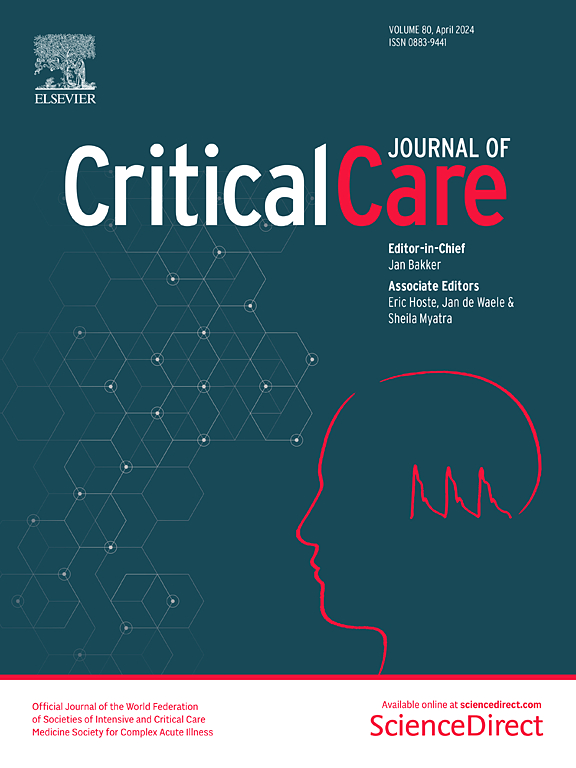Limitations of SpO2 / FiO2-ratio for classification and monitoring of acute respiratory distress syndrome—an observational cohort study
IF 8.8
1区 医学
Q1 CRITICAL CARE MEDICINE
引用次数: 0
Abstract
The ratio of pulse-oximetric peripheral oxygen saturation to fraction of inspired oxygen (SpO2/FiO2) has been proposed as additional hypoxemia criterion in a new global definition of acute respiratory distress syndrome (ARDS). This study aims to evaluate the clinical and theoretical limitations of the SpO2/FiO2-ratio when using it to classify patients with ARDS and to follow disease progression. Observational cohort study of ARDS patients from three high-resolution Intensive Care Unit databases, including our own database ICU Cockpit, MIMIC-IV (Version 3.0) and SICdb (Version 1.0.6). Patients with ARDS were identified based on the Berlin criteria or ICD 9/10-codes. Time-matched datapoints of SpO2, FiO2 and partial pressure of oxygen in arterial blood (PaO2) were created. Severity classification followed the thresholds for SpO2/FiO2 and PaO2/FiO2 of the newly proposed global definition. Overall, 708 ARDS patients were included in the analysis. ARDS severity was misclassified by SpO2/FiO2 in 33% of datapoints, out of which 84% were classified as more severe. This can be partially explained by imprecision of SpO2 measurement and equation used to transform SpO2/FiO2 to PaO2/FiO2. A high dependence of SpO2/FiO2-ratio on FiO2 settings was found, leading to major treatment effect and limited capability for tracking change in ARDS severity, which was achieved in less than 20% of events. The use of SpO2/FiO2 interchangeably with PaO2/FiO2 for severity classification and monitoring of ARDS is limited by its inadequate trending ability and high dependence on FiO2 settings, which may influence treatment decisions and patient selection in clinical trials.求助全文
约1分钟内获得全文
求助全文
来源期刊

Critical Care
医学-危重病医学
CiteScore
20.60
自引率
3.30%
发文量
348
审稿时长
1.5 months
期刊介绍:
Critical Care is an esteemed international medical journal that undergoes a rigorous peer-review process to maintain its high quality standards. Its primary objective is to enhance the healthcare services offered to critically ill patients. To achieve this, the journal focuses on gathering, exchanging, disseminating, and endorsing evidence-based information that is highly relevant to intensivists. By doing so, Critical Care seeks to provide a thorough and inclusive examination of the intensive care field.
 求助内容:
求助内容: 应助结果提醒方式:
应助结果提醒方式:


